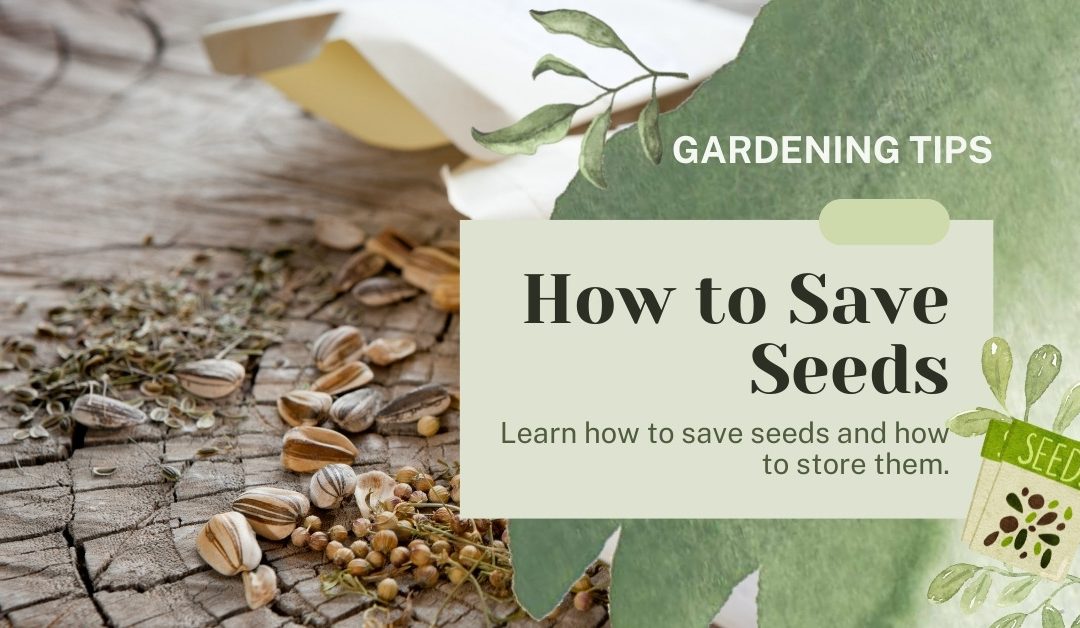Seed-saving is a centuries-old practice that helps you prepare for next year’s garden now. When stored properly, seeds saved from your garden can be planted the following year for a bountiful harvest – free of charge.
To succeed with seed-saving, you’ll need to choose suitable plants, harvest your seeds at just the right time and store them properly.
In this guide, we’ll show you how to save seeds for some of the most popular garden plants and the best ways to store them.
How To Save Seeds
Before we get into the specifics of saving seeds for each type of plant, we need to cover one important thing:
One of the first things you need to consider when saving seeds is whether the plant varieties are open-pollinated or hybrid. Heirloom varieties are open-pollinated, as are many other varieties. These are the seeds you want to save, as they will come true from seeds.
Because hybrids are created by crossing two parent plants, they won’t breed true. So, make sure you’re only saving seeds from open-pollinated varieties. If you grew your plants from seeds, check with the seller to see whether the variety is open-pollinated or hybrid.

How To Save Tomato Seeds
When saving tomato seed, make sure you choose your best plants.
When we say “best,” we mean whatever you feel is best. It could be the biggest plant or the plant that produced the juiciest or most colorful tomatoes.
Avoid saving seeds from plants that struggled with disease or produced misshapen or under-ripened fruit.
For genetic diversity, save seeds from multiple tomatoes and, ideally, from more than one plant of the same variety if you can. Of course, you should only save seeds from ripe tomatoes.
Fermentation
While you don’t have to ferment tomato seeds, the process makes it a little easier to remove the seeds from the gel. It also helps weed out bad seeds and can reduce foodborne illnesses. If you plan to share your seeds with others, it’s considered a good practice to ferment them first.
How do you ferment tomato seeds?
- Cut your tomato in half.
- Squeeze or scoop out the seeds and gel.
- Place the seeds and gel in a container labeled with the variety.
- Add 1/4-1/2 cup of water to the container.
- Set the container aside, away from the sun, for 3-5 days.
- A moldy film may form, and that’s completely normal and okay.
- To remove the seeds, first, carefully remove the film.
- Add a little more water and stir.
- Good seeds will sink, so gently pour off the water and bits of pulp floating at the top.
- Repeat this process until all of the pulp is gone and your seeds are clean.
- Drain, and spread your seeds on a paper plate or screen to dry out. Avoid using ceramic or plastic plates. The goal is to remove moisture from the seeds.
Don’t forget to label your plates if you’re saving seeds from different varieties. Tomato seeds are viable for years, so it’s well worth the effort to save seeds.
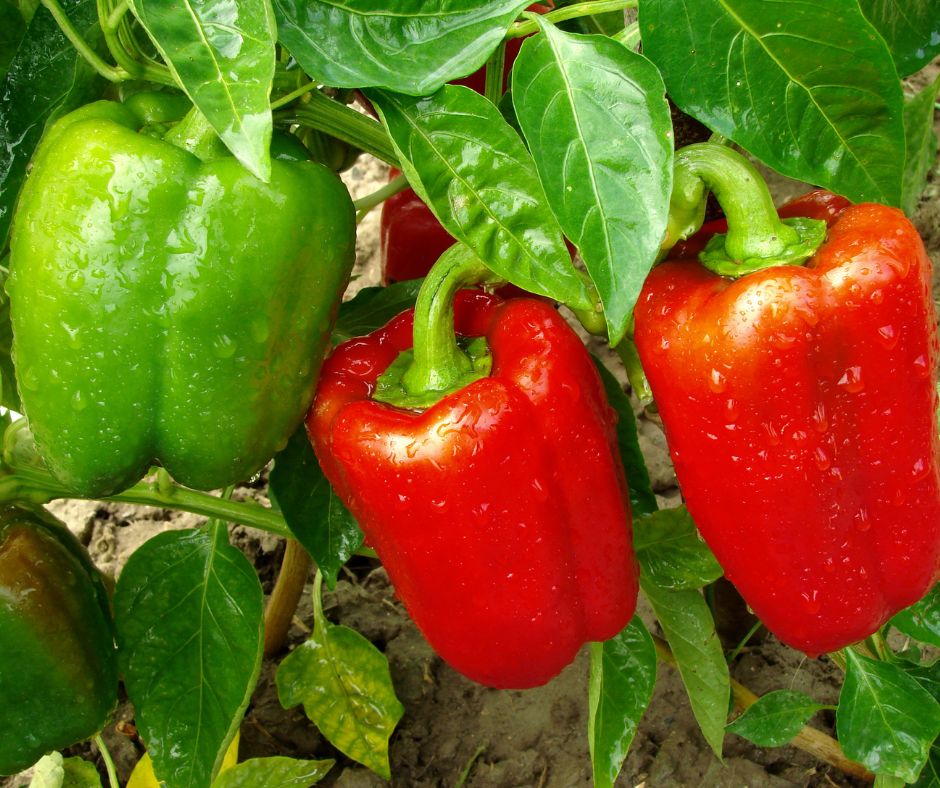
How To Save Pepper Seeds
Pepper seeds can be extracted using either a wet or dry process. Thick-walled peppers, like bell peppers, typically use a wet process. With thin-walled peppers, you can use either wet or dry.
Note: If you’re saving seeds from a hot pepper, take precautions to protect yourself from capsaicin. Capsaicin can irritate your eyes, skin and gloves. Make sure that you wear gloves, masks, goggles and a respirator when extracting seeds from hot peppers.
Like with tomatoes, you want to save seeds from the best plants.
Here’s the simplest way to save seeds from larger peppers:
- Cut open the pepper and carefully scrape the seeds from the core.
- Place the seeds in an ultra-fine mesh screen or strainer, and gently rinse to remove any leftover pulp.
- Dry seeds. Coffee filters work well for the drying process. Make sure you place them in a warm, dry location that gets plenty of air circulation.
For thin-walled peppers, a dry process can work well for seed saving.
- After harvesting your peppers for seed saving, allow them to dry out in a protected location.
- The goal is to dry out the peppers until their flesh becomes brittle enough to break apart.
- Once sufficiently dried, crush and rub the peppers in a larger container.
The dry process doesn’t work well for bell peppers and other thick-walled peppers because the fruit rots before it has a chance to dry out.
When properly dried and stored, your pepper seeds will remain viable for 2-4 years.
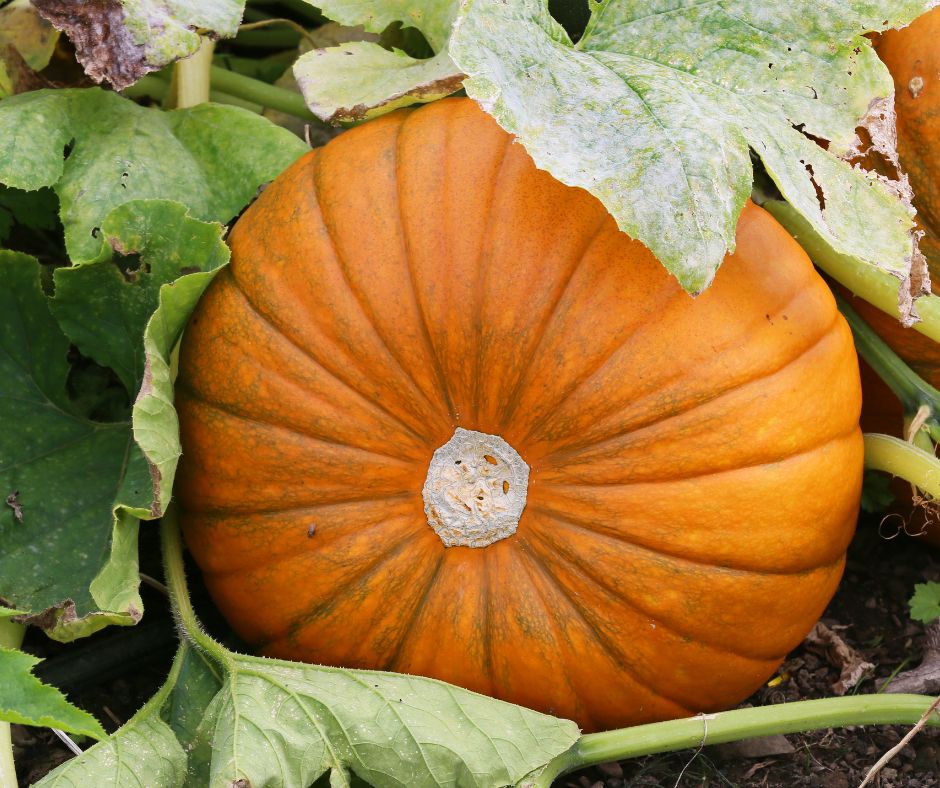
How To Save Pumpkin Seeds for Planting
Save seeds from your garden-grown or store-bought pumpkins to grow your own every year and have plenty of pumpkins to carve or eat.
Saving pumpkin seeds is easy:
- Cut open the pumpkin to remove the seeds and pulp from the inside.
- Place the pulp and seeds in a strainer.
- Run cool water over the pulp, and start separating the seeds.
- You’re going to have a lot of seeds – probably more than you can plant. Pick out the biggest and healthiest-looking seeds from the bunch to save. Plan to save three times more than you want to plant. You can roast the remaining seeds to snack on.
- Take the seeds you want to save and place them on a dry paper towel. Make sure that the seeds are separated.
- Place in a cool, dry place (a pantry works well!) for one week.
Once dry, store your seeds in a paper envelope for planting in your fall garden next year.
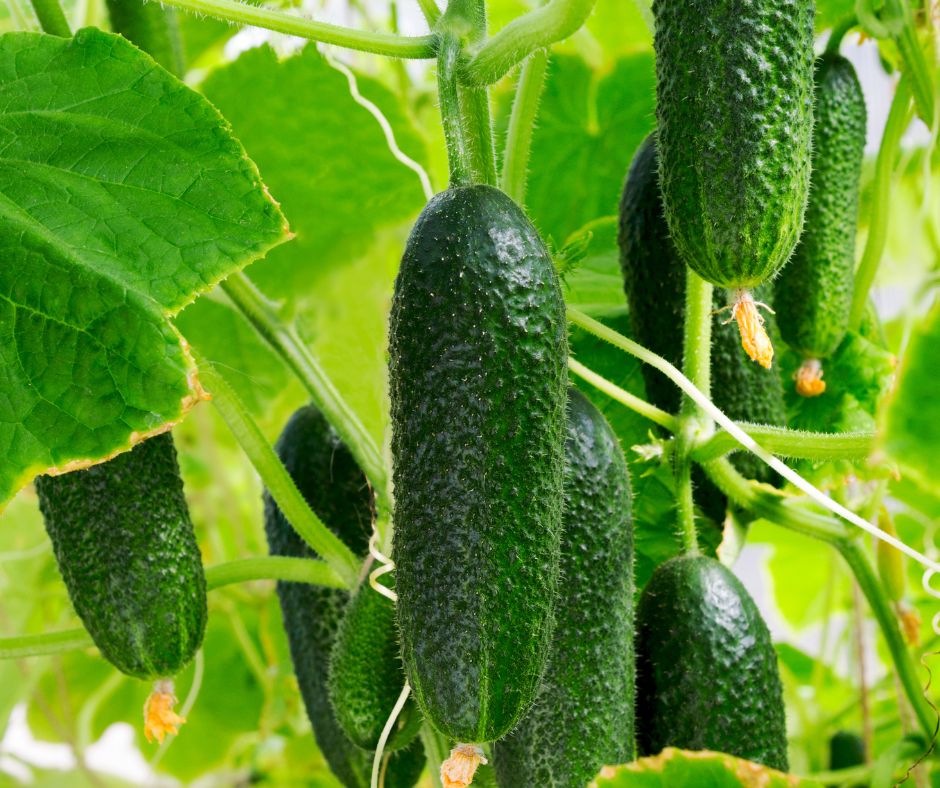
How To Save Seeds from Cucumbers
Saving seeds from heirloom cucumbers is very similar to saving seeds from tomatoes.
One important thing to note here is that because cucumbers require wind, insect pollinators or hand pollination, cross-pollination is possible. So, you may wind up with a mix of cucumbers when collecting seeds. If you’re serious about saving cucumber seeds, you should isolate the seed-saving plant from its cousins. For many gardeners, this really isn’t a practical option. So, be aware that cross-pollination may leave you with some weird results when you plant your seeds.
But what’s wrong with experimenting, right? Here’s what you’ll need to do to save your seeds:
- Select cucumbers from disease-free plants and those that have the most flavor. Wait until your cucumbers are mature before harvesting seeds.
- Cut your cucumbers in half lengthwise.
- Scoop out the seeds and pulp.
- Place the mixture of pulp and seeds in a small, clean container.
- Cover the pulp/seed mix with water.
- Allow the pulp/seed to ferment for 1-3 days out of the sun to separate the pulp from the seeds.
- Once fermented, add more water, and stir.
- The lightweight seeds and pulp will float to the top and can be removed.
- Viable seeds will sink and should be saved.
Rinse the viable seeds clean and allow them to dry out on coffee filters.
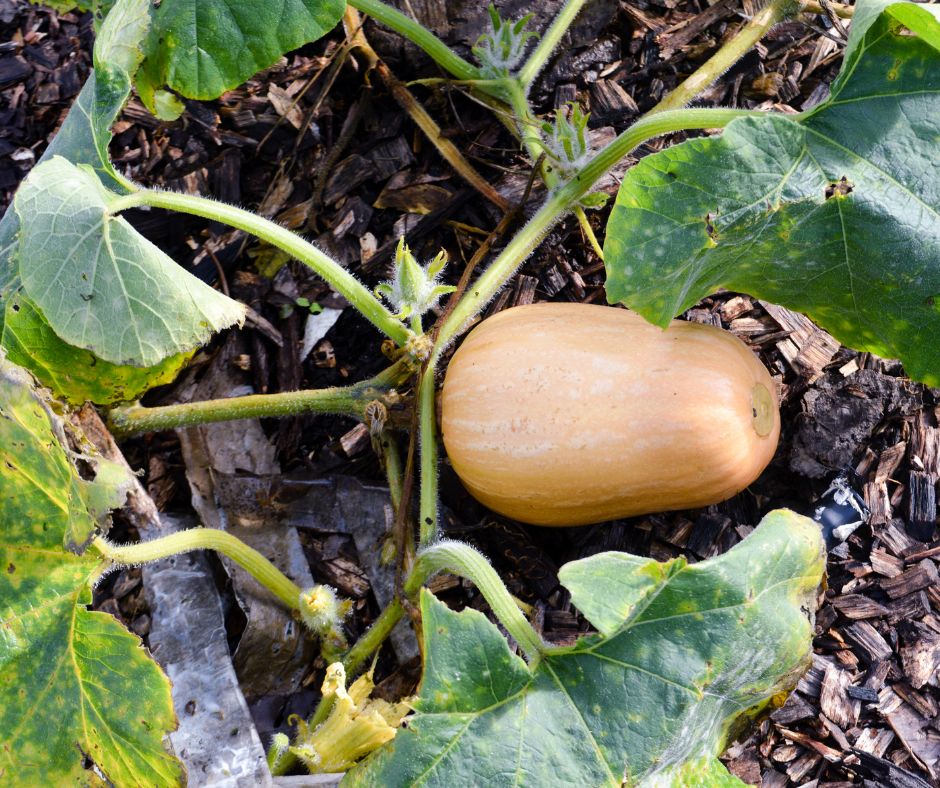
How To Save Seeds from Squash
To save seeds from squash, you’ll follow the same steps as you would with saving pumpkin seeds. In fact, a pumpkin is a squash, so the process is exactly the same.
- Cut open the squash.
- Scoop out the pulp and seeds.
- Place the seed/pulp mixture in a strainer.
- Rinse with cool water, and begin picking out the seeds.
- Save the biggest seeds, and roast (for snacking) or discard the remaining ones.
- Lay the seeds you want to save on a clean, dry paper towel for a few days to dry out.
- Store your seeds in an envelope for planting next year.
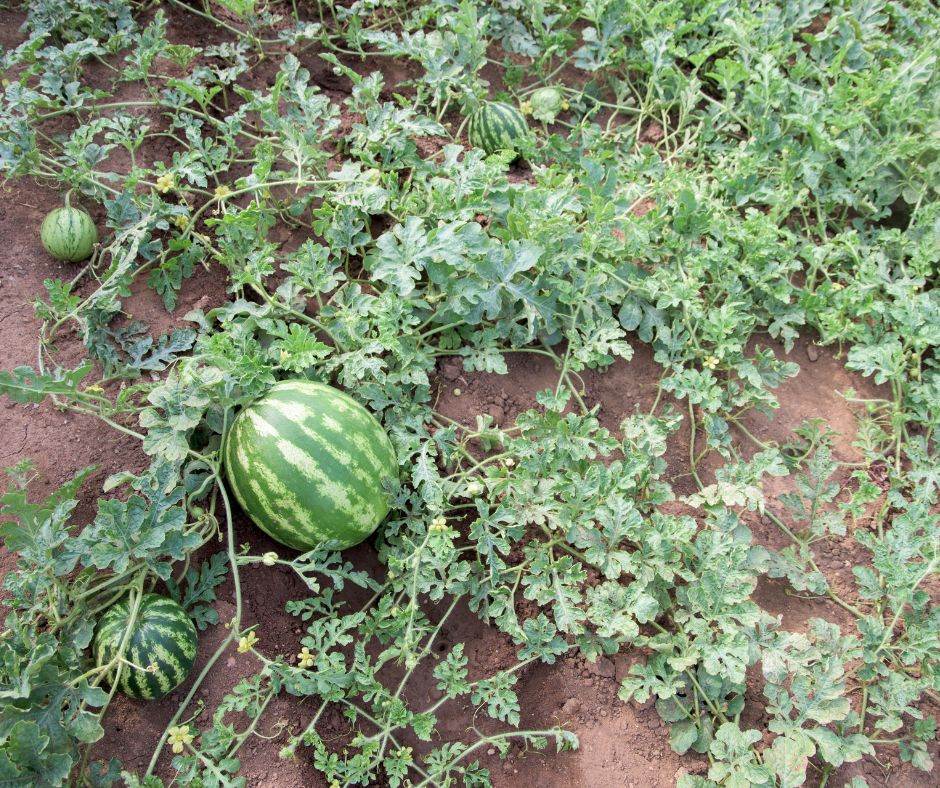
How To Save Watermelon Seeds
Saving watermelon seeds is easier than you think. It’s hard to beat a fresh, juicy watermelon from the garden, so it’s worth the time to save seeds from your best crop.
To save seeds:
- Cut up the watermelon.
- Collect the seeds in a bowl or cup.
- Place your seeds in a strainer.
- Rinse the seeds and remove any remaining juice and pulp.
- Lay your seeds out on wax paper and allow them to dry for one week.
Once dried, store your seeds in a paper envelope for planting next year.
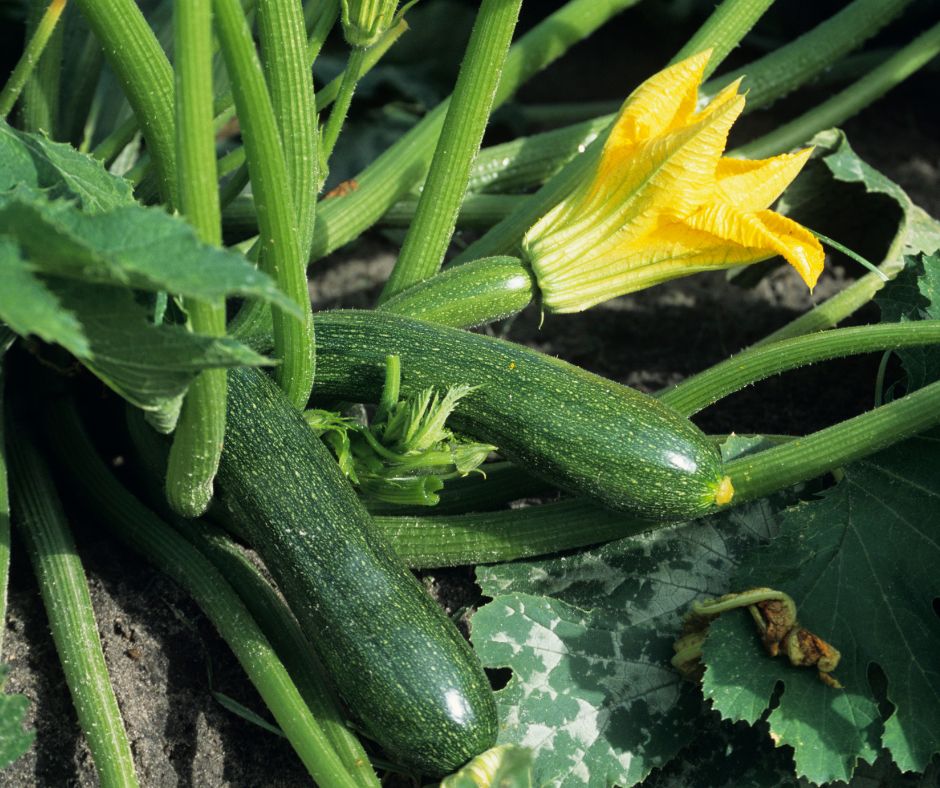
How To Save Zucchini Seeds
Saving zucchini seeds is a straightforward process, but you won’t be harvesting seeds from zucchini that you’ll be eating. In fact, the zucchini you know and love to eat is actually an immature fruit. If you want to save seeds from your plant, you’ll need to wait until you have mega zucchinis.
Wait until they are large and swollen and their skin is hard. The zucchini will be inedible, but you’ll be able to save the seeds.
To prepare the seeds for storing, you’ll use a similar method to tomato and cucumber seed saving.
- Slice the zucchini in half lengthwise.
- Scoop out the seeds and pulp and place them in a clean container.
- Compost the rest of the zucchini.
- Add just enough water to cover the seeds and pulp mixture.
- Allow the seeds to ferment for 1-3 days.
- Once fermented, add more water to the container to filter out the viable seeds. The pulp and unviable seeds will float to the top. Remove them. Viable seeds will sink to the bottom.
- Rinse the viable seeds.
- Lay the seeds out on coffee filters to dry.
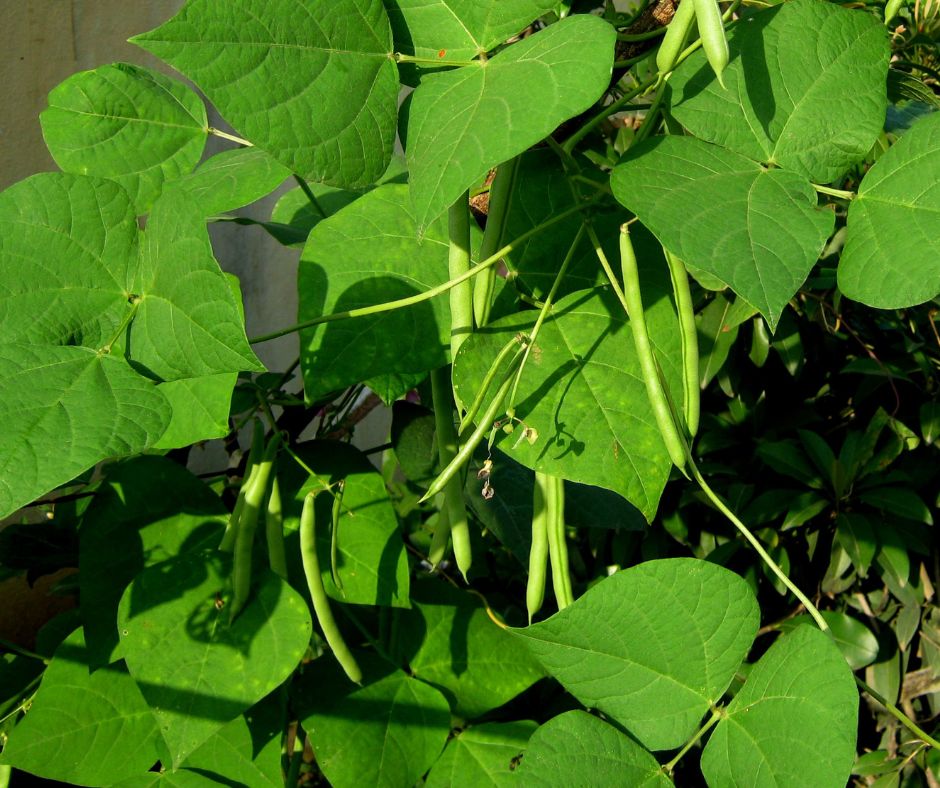
How To Save Green Bean Seeds
Beans are so easy to grow and a popular garden crop. The great news is that saving seeds from your green bean plants is easier than you think.
To save seeds:
- Allow the green beans to ripen and dry out to the point where they are starting to brown.
- At this stage, the seeds will be loose. In fact, if you shake the pod, you should hear them rattle. It can take a month or so to reach this stage.
- Once fully dried out, you can harvest.
- Remove the pods from the plants, and allow them to dry inside for at least two weeks.
- At this point, you can shell the beans or leave the seeds inside of the seed pods until you’re ready to plant next year.
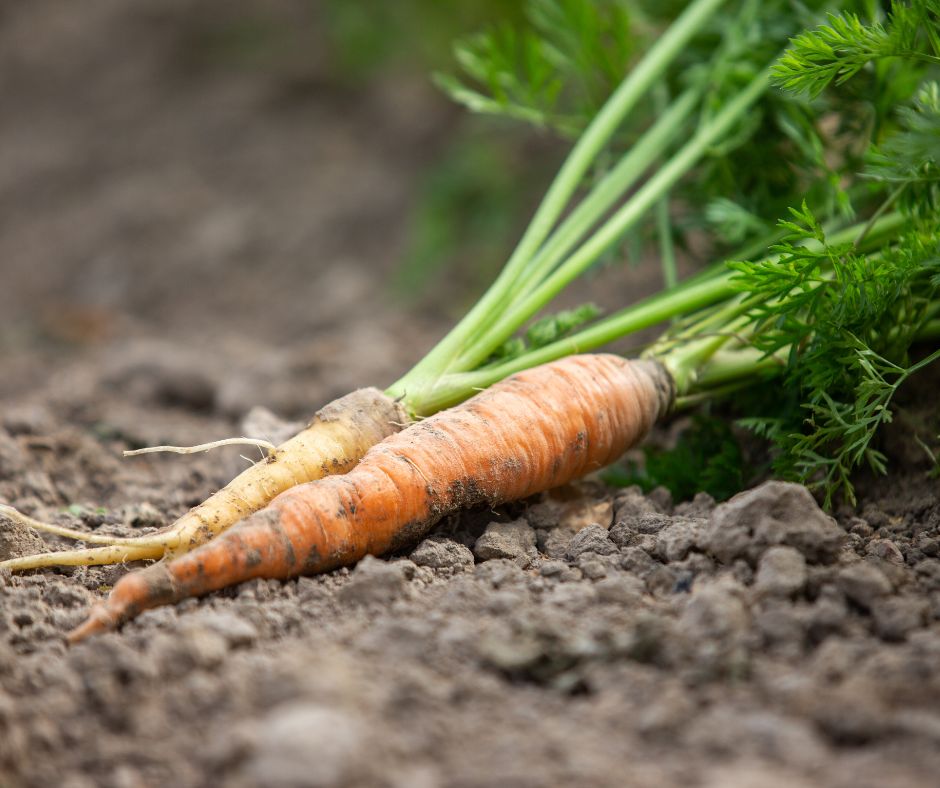
How To Save Carrot Seeds
Saving carrot seeds is worth the effort. Each plant can produce up to 1,000 flowers! That gives you the potential to grow a thousand carrot plants in the future.
Carrots are biennials, which means you’ll have to wait two years to harvest their seeds. To ensure that you get carrots that are true to their type, you’ll need to start the process in the first year.
One of the first and most important steps is to isolate your selected carrot plants from other varieties. Otherwise, pollinators may fertilize your carrots with pollen from other varieties, and you may not wind up with carrots that are true to type.
Vernalization
It takes two years for carrots to complete their reproductive cycle, and it’s the cold season that tells these plants to start reproducing. That cold period is called vernalization, and it’s what triggers the flowering needed to collect seeds.
- If you have at least 10-12 weeks of temperatures below 59°F in your area, then you can easily overwinter your carrots in your garden (keep them in the ground).
- For regions where the ground freezes, you can still keep your carrots in the ground if they are well mulched.
- If it’s too warm or too cold in your area, you can harvest your carrots, trim off the greens and store them in a root cellar or fridge for the winter to mimic this cold state.
In spring, carrots that have been stored can be replanted at the same time you would normally plant carrot seeds. Only choose healthy carrots to replant. Some may not survive the winter. Any rotted carrots can be composted.
Keep your carrots three feet apart to give them room for growth in their second year. Watch for leafy flowers. Carrot flowers are umbrella-shaped with beautiful white flowers. They look similar to dill or caraway.
Allow the blooms to dry out. When the flower clusters have dried out in late summer, you can then harvest the seeds.
Experts recommend saving seeds from at least five plants to ensure enough genetic diversity and viable seeds.
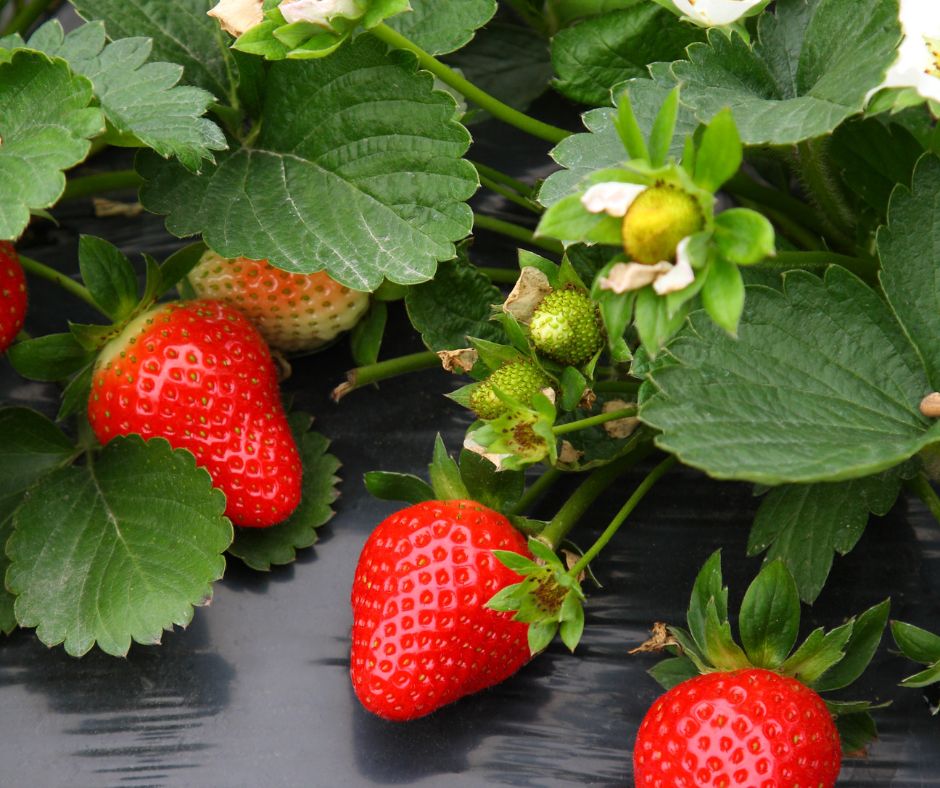
How To Save Strawberry Seeds
Unlike most other plants, strawberry seeds are on the outside of the plant. These perennial plants will continue to produce berries every year for three to four years. Saving seeds will help you grow your strawberry patch and keep it thriving for years to come.
Here’s how to save seeds from strawberries:
- Choose ripe, healthy berries for seed saving.
- To separate the seeds, place the berries in a blender along with a cup of water.
- Blend for just a few seconds, and allow the mixture to sit for a minute or two.
- Viable seeds will sink to the bottom.
- Unripe seeds and the pulp will float to the top.
- Carefully pour off the liquid.
- Collect the high-quality seed, and gently rinse them off.
- Lay the seeds out on a clean, dry paper towel to dry out.
Once dried out, your seeds are ready for storing and planting next year.
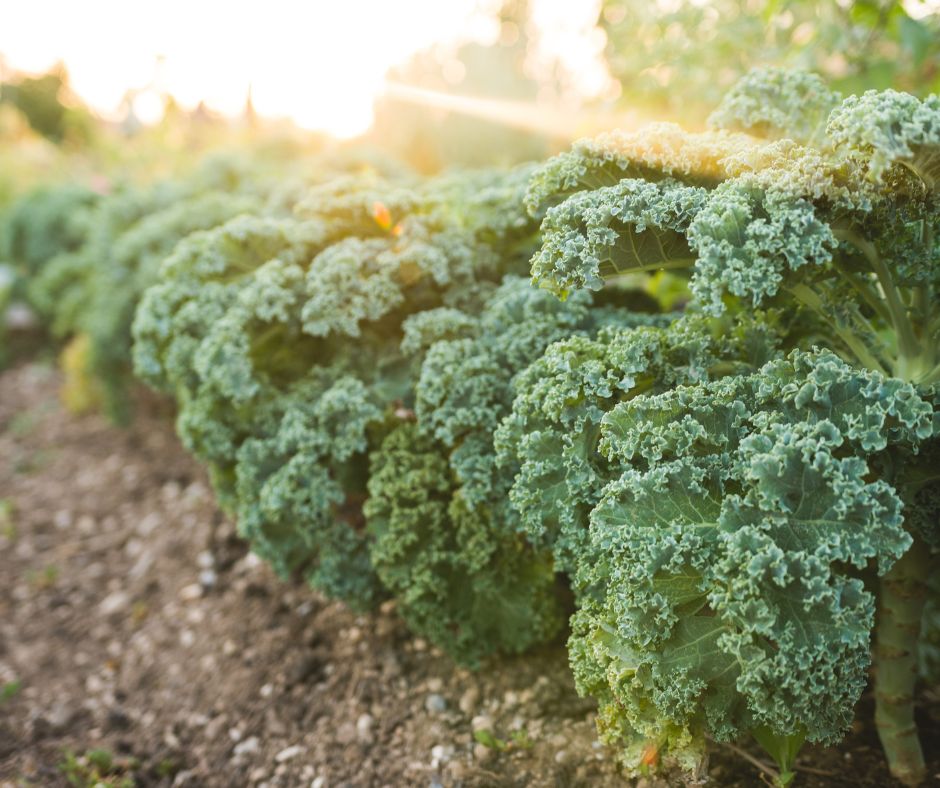
How To Save Kale Seeds
Like carrots, kale is a biennial plant, which means it takes two years to complete its reproductive cycle. In other words, your kale plants won’t go to seed until year two.
To get your kale plants to flower, you’ll need to let them overwinter. If you’re in zones 7-10, you can allow your plant to overwinter right in the garden and harvest leaves all season long.
But to keep your plants healthy, it’s important to lay down a thick layer (4”-6”) of mulch around your kale. You can use pine straw, leaf mold, grass clippings or even sawdust as mulch for your kale.
You can continue harvesting leaves in the spring. In summer, your kale plant will have completed its life cycle and will send out flower stalks. You can still harvest leaves at this time, but they won’t be as flavorful once the plant starts flowering.
Kale’s flower stalks can grow to be 3-5 feet tall. Once they finish flowering, the plant produces long, thin pods on its stalks. Soon after, they fade from green to a beige/brown color. Now is the time to harvest the pods. If you wait too long, the pod will burst open and release its seeds.
- Cut the stalks down to the ground.
- Invert the stems, and place the heads in large paper bags.
- Hang the stalks in a cool, dry place away from wind.
- It can take 10-21 days for the pods to dry out thoroughly.
- Then, you can shake the bag to dislodge the seeds.
But you’re not done yet! You still need to go through a process called winnowing to separate your seeds from the chaff. Fortunately, winnowing is a pretty simple task. Use a screen with holes large enough for the seeds to fall through. Gently shake the seeds, and the chaff should be left on the screen.
Although it’s a bit of work to save kale seeds, one plant can easily produce hundreds of seeds.
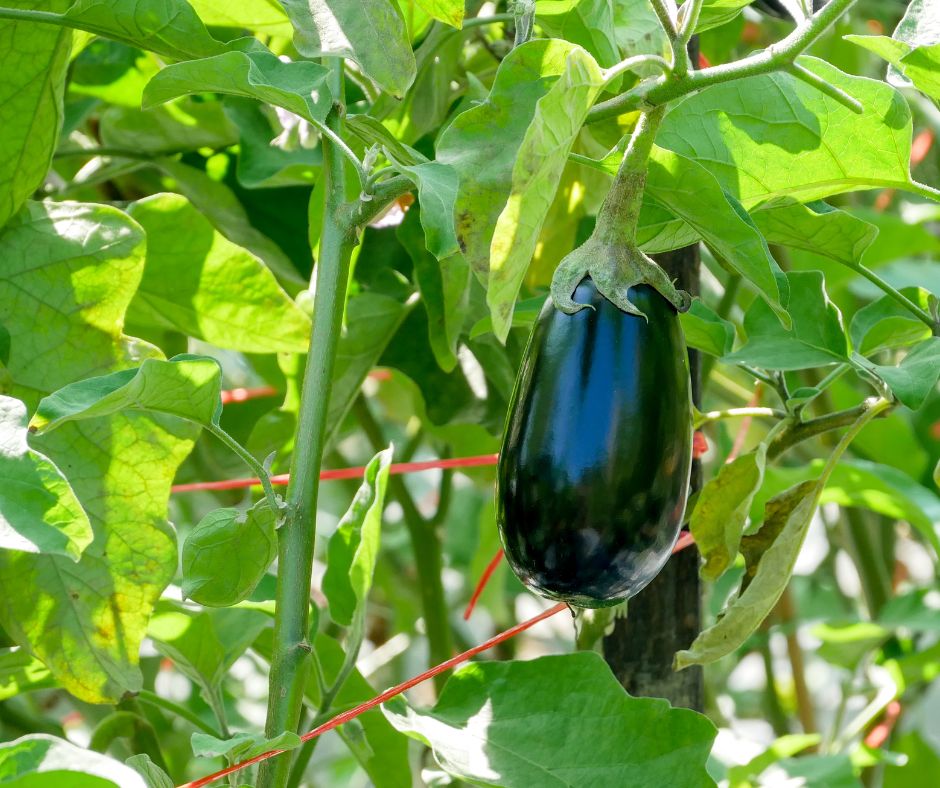
How To Save Eggplant Seeds
Saving seeds from eggplants is easy, but you’ll need to be patient. Before harvesting the seeds, you need to wait until the fruit is overripe to the point where it’s inedible. The eggplants you harvest for eating have immature seeds.
How do you know when your eggplants are overripe?
- Purple eggplants will turn brown or tan
- Green and white eggplants will turn yellow
- Eggplants that are overripe will be hard with shriveled skin
To harvest seeds:
- Slice open the eggplant.
- Scoop out the seeds.
- Fill a bowl with water and add the seeds.
- Separate the pulp from the seed.
- Strain the seeds and dry them with a paper towel.
- Lay the seeds out on a tray or paper plate to dry out.
It can take 2-4 weeks for the seeds to fully dry out.
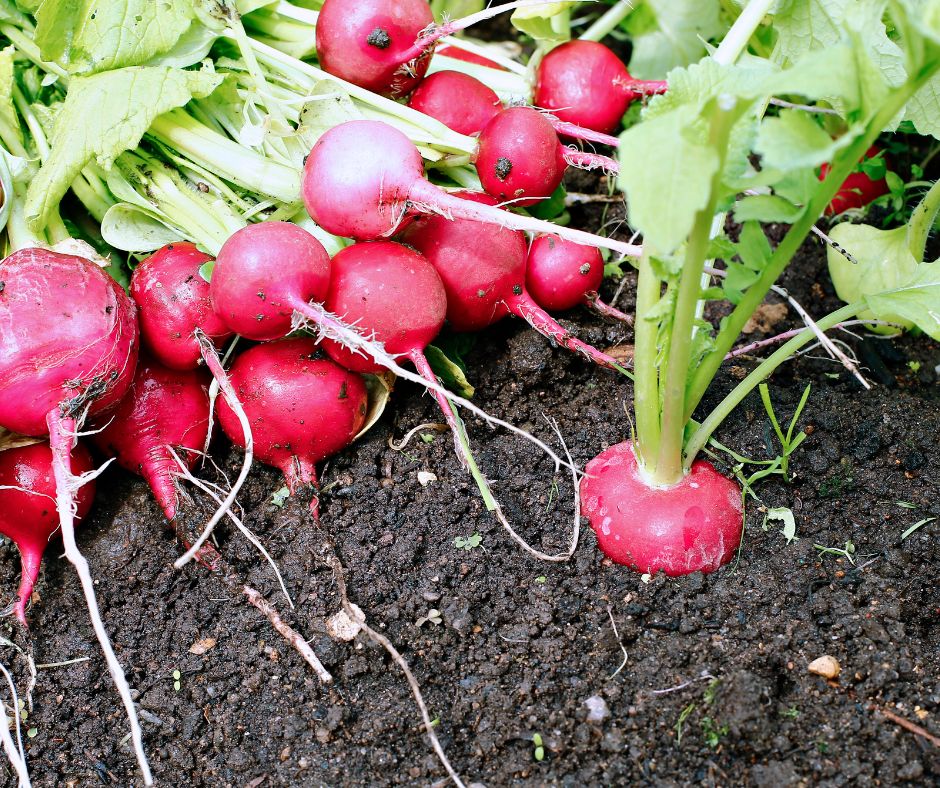
How To Save Radish Seeds
It’s easy to harvest radish seeds from your garden, but you’ll need to be patient and forfeit some plants in the process.
To collect seeds, you’ll need to let some of your radish plants bolt (flower). Your radishes won’t be edible at this point, but you’ll be rewarded with plenty of seeds to plant next year.
Radishes tend to bolt mid-summer when temperatures are at their hottest. Wait until the pods have turned brown and become brittle. In most areas, this happens around early to late summer.
Cut the branches with pods, and leave them to dry out on landscape fabric or a row cover in a sheltered spot. It typically takes 1-5 days for the pods to dry out completely.
You’ll need to separate the seed from the chaff to access the seeds.
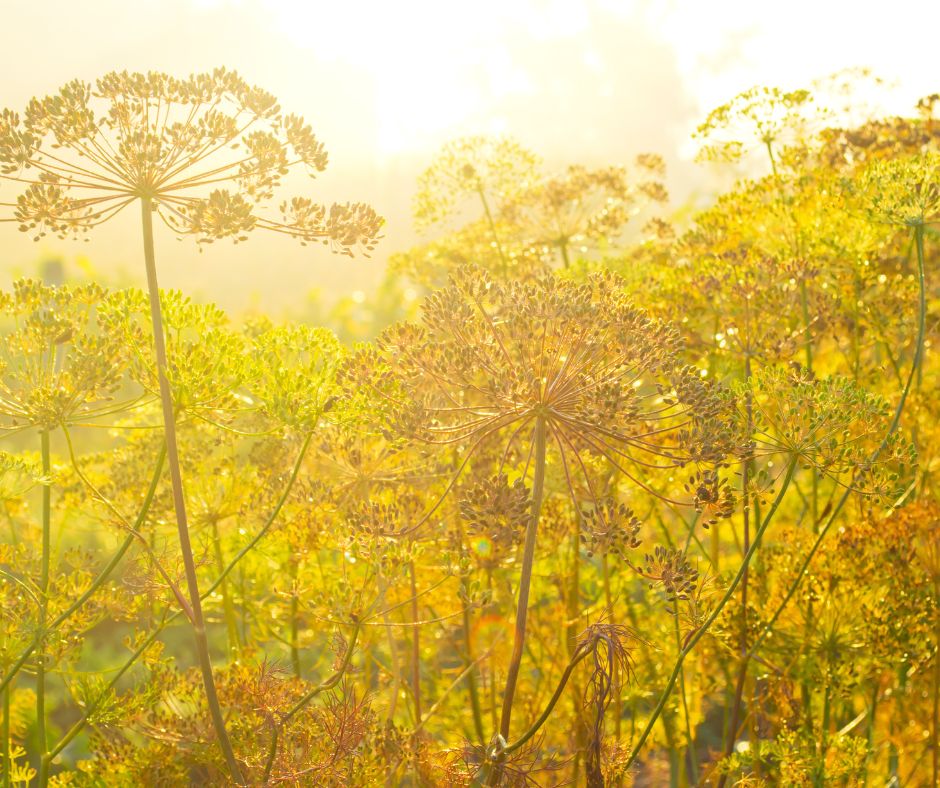
How To Save Dill Seeds
Dill is such a great addition to the garden and great for companion planting to keep pests away. It’s a great herb to add to so many dishes, and its flowerheads add a bit of whimsy to the garden, too.
Another thing you’ll love about dill is that the seeds are so easy to save. And one flowerhead can produce a lot of seeds that you can use for pickles, soups, stews and more. Of course, you can use them for planting new dill, too.
Here’s how to save seeds from this flavorful herb:
- The simplest way to gather seeds from dill is to let the plant dry itself out in your garden. Once the flowerheads have turned brown and become dry, you’re ready to start harvesting your seeds.
- If you’re impatient, you can cut the blooms from the plant (wait until they’ve finished blooming), and place the stems in a paper bag, flowerhead-side down, to dry out.
- Once your plants are dry, grab one of the flowerheads and a paper plate.
- Gently rub the seeds off the ends of the stems. They should come off fairly easily now that the plant is dried out.
- Repeat until you’ve gathered all of the seeds from your flowerheads.
It couldn’t be easier to gather seeds from dill, and you can use them however you want. You’ll likely have more seeds than you can plant, so don’t be afraid to add them to some of your favorite dishes.
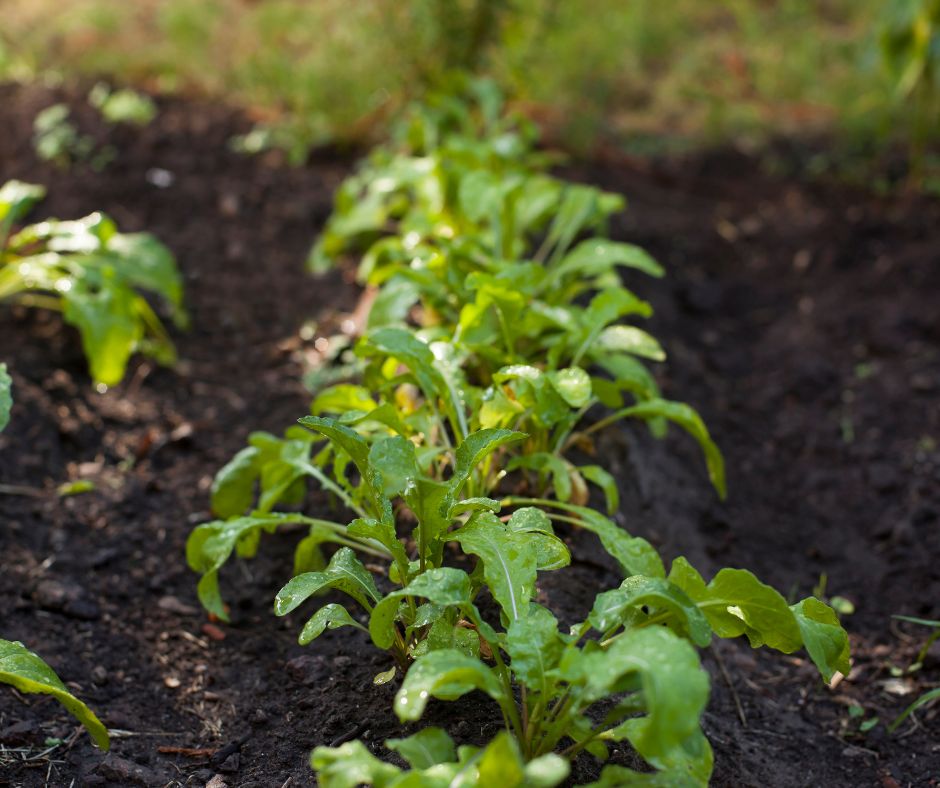
How To Save Arugula Seeds
Arugula is a wonderful, easy crop to grow in spring and fall. But in hot weather, it tends to bolt very quickly. When it bolts, it sends out little white flowers with pretty dark veins. Shortly after, arugula will form little seed pods along the stem. The seed pods are edible but very spicy.
At this stage, you’ll need to let your plants dry out.
- Once your plant has dried out and turned brown, it’s time to clip the stems and bring them inside. You’ll know the plants are ready if you hear a rattling sound when shaking the pods.
- Hang the plant upside down in a paper bag for about a week.
- To harvest your seeds, you’ll need to do some threshing. You can gently shake the bag or crumble the seed pods to set the seeds free.
- At this point, you’ll have some chaff mixed in with your seeds. You can remove the chaff by either blowing it off or using a sieve with holes bigger than the seeds.
Saving arugula seeds requires patience, but it’s a simple process that’s worth the wait.
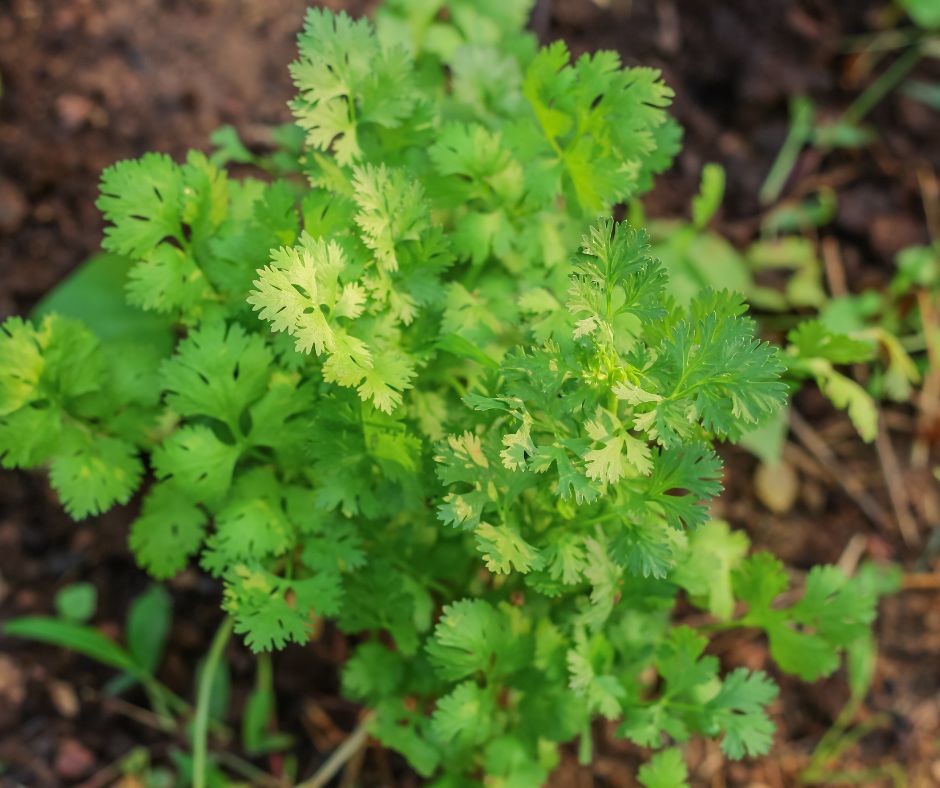
How To Save Cilantro Seeds
Saving cilantro seeds, or coriander, is easy. I love that this herb is so easy to grow, and the seeds are wonderfully flavorful. You can save some for cooking and save another batch for planting.
Here’s how to save seeds from this garden-favorite herb:
- You’ll need to let your plants flower if you want to save their seeds. Once the flowers die, they produce clusters of brown-colored seeds.
- Wait until the flowers have completely dried out and turned brown. You can just leave your plant in the garden – no fussing required!
- Coriander seeds are quite big and easy to see, so you’ll know when they’re ready for harvesting.
- Grab a clean container and gently rub a seed head between your fingers to release the seeds.
It really is that easy to save cilantro seeds! If you want, you can just let the plant die back naturally and drop its own seeds to have continual cilantro plants growing each year.
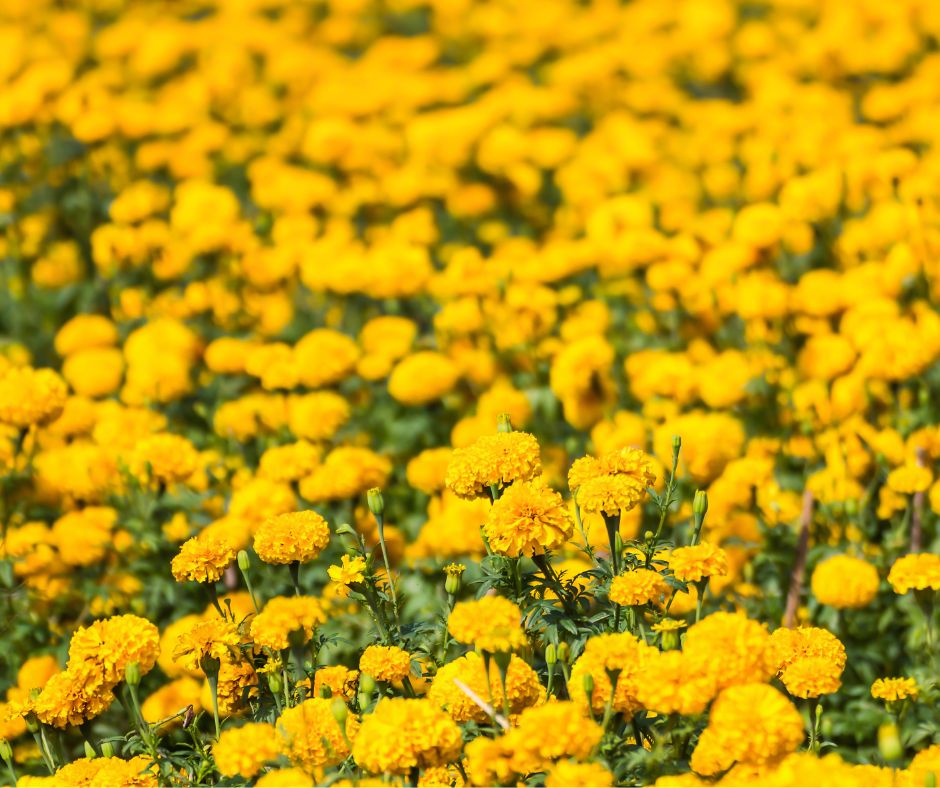
How To Save Seeds from Marigolds
Marigolds are a great addition to any flower or vegetable garden. They’re easy to grow, low maintenance, add bright color and keep pests away. Because they are annuals, they need to be replanted every year. The good news is that you can save seeds from your plants each year to have a free, endless supply of marigolds.
Saving marigold seeds is easy, but finding them can be tricky. Why? Because these plants don’t produce recognizable seed pods.
The key is to wait until the flowers have died back and dried out.
- Look for flowers that have withered and dried but still have a little green at the base.
- Remove the flower head from the plant by cutting a few inches down the stem.
- Gently pinch off the petals while holding the base of the flowerhead with your other hand.
- As the petals slide off, you should see some pointy black spears. Here are your seeds. They look kind of like mini broomsticks.
Once you’ve gathered your seeds, you can save them for planting next year.
Storing Seeds
Gathering seeds is a rewarding practice and one that will continue to fill your garden with healthy vegetables or herbs for your family. Once you’ve harvested your seeds, make sure that you store them in an airtight container in a cool, dry place. Optimal seed storage is the key to ensuring your seeds have good germination rates.
Rene is a creative, little gnome. When she's not diving deep into research on health and wellness, she's spending here time out in nature, growing her homestead, photographing wildlife, doing yoga or enjoying a zen (depending on the day) moment with her fur babies. And on top of all of that, she's a professional writer by day, helping businesses around the world grow.

